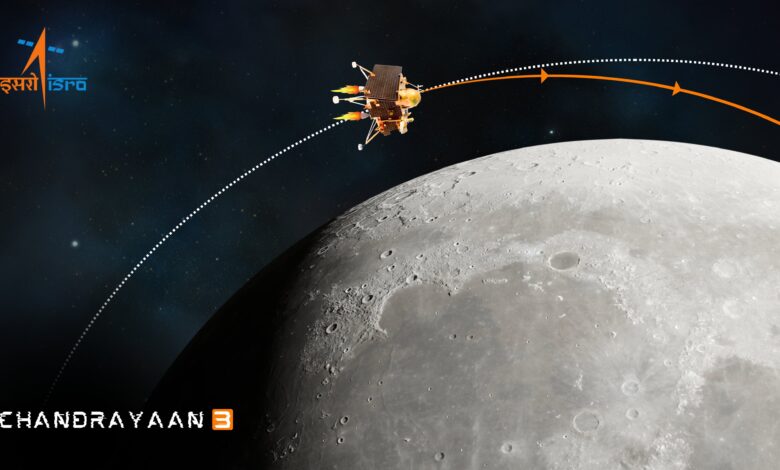Successful De-Orbiting Maneuver Sets Stage for Chandrayaan-3’s Lunar Descent

In a significant milestone for India’s Chandrayaan-3 mission, the second de-orbiting maneuver for the Lander Module was executed flawlessly today, marking another step towards the lunar surface. This achievement brings the Lander Module into a stable orbit of 25 km x 134 km. The health of the Lander Module (LM) has been confirmed as normal, and excitement is building as the mission progresses.
With this successful maneuver, the Chandrayaan-3 team has accomplished the required orbit for the Lander Module to commence its descent towards the lunar surface. The highly anticipated touchdown is scheduled for August 23, 2023, between 1730 – 1830 hrs IST.
Chandrayaan-3 is the follow-on mission to Chandrayaan-2 and aims to demonstrate India’s capabilities in safe lunar landing and surface exploration. It consists of a Lander and Rover configuration, set to launch from SDSC SHAR, Sriharikota, via the LVM3 rocket. The propulsion module will accompany the lander and rover configuration until it reaches a 100 km lunar orbit. Notably, the propulsion module carries the Spectro-polarimetry of Habitable Planet Earth (SHAPE) payload, intended for studying Earth from lunar orbit.
Payloads Aboard Chandrayaan-3
The mission boasts an array of scientific payloads, including:
Lander Payloads:
- Chandra’s Surface Thermophysical Experiment (ChaSTE): Designed to measure thermal conductivity and temperature on the lunar surface.
- Instrument for Lunar Seismic Activity (ILSA): Tasked with measuring lunar seismicity around the landing site and mapping the lunar crust and mantle structure.
- Langmuir Probe (LP): To estimate plasma density and variations.
- Passive Laser Retroreflector Array: A NASA contribution for lunar laser ranging studies.
Rover Payloads:
- Alpha Particle X-ray Spectrometer (APXS): Utilized for deriving elemental compositions in the vicinity of the landing site.
- Laser Induced Breakdown Spectroscope (LIBS): Enables qualitative and quantitative elemental analysis and mineralogical composition inference on lunar soil and rocks.
Propulsion Module Payload:
- Spectro-polarimetry of Habitable Planet Earth (SHAPE): Aims to facilitate future discoveries of smaller planets in reflected light, potentially revealing insights into habitability and the presence of life.
Chandrayaan-3 Mission Objectives
The objectives of the Chandrayaan-3 mission include:
- Demonstrating safe and soft landing on the lunar surface.
- Showcasing rover mobility on the Moon.
- Conducting in-situ scientific experiments to expand our understanding of the lunar environment.
To achieve these goals, the mission incorporates advanced technologies, such as laser and RF-based altimeters, laser gyro-based inertial measurement systems, and a bi-propellant propulsion system. Various tests have been conducted to validate these technologies under conditions simulating lunar operations.
With these achievements, Chandrayaan-3 marks another significant step in India’s lunar exploration journey, offering the promise of new discoveries and technological advancements in lunar science.




